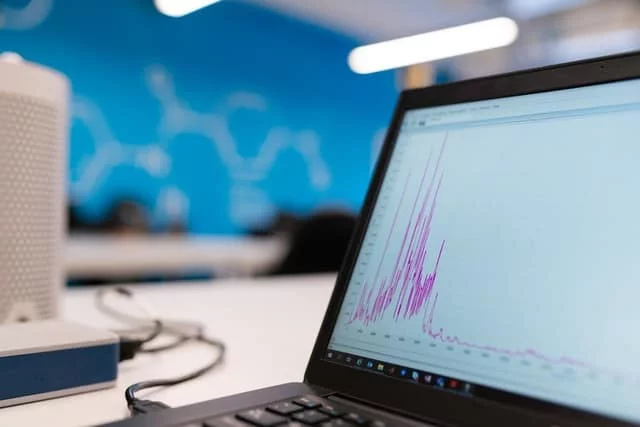Updated 28th March 2025
Project managers often use the terms risk management and issue management interchangeably. In many industries, buzzwords and talk are a big part of project management where investors and directors are looking for answers and updates at each stage. However, this can lead to a novice project manager not knowing the difference between these interchangeable terms when they are learning from a project manager who confuses the two.
Risks and issues are different concepts and need to be handled in completely different ways. Both concepts need monitoring and an efficient project manager should have strategies in place to manage the risks and issues and also to adapt to changing situations.
But before you can put any strategies in place, it is vital that you understand the difference between a risk and an issue and the different approaches needed in the management of both.
What is a risk?
Considering risks at the start of any project is an essential part of planning and strategizing. A risk is something which has the potential to occur or to go wrong. It is vital that risks are considered at the beginning of any project so that all parties are aware of things that could affect the success or the outcome of the project. Risks may be conjecture or the anticipation of things happening, they may be likely to happen or very unlikely but even if there is the smallest possibility of it affecting the project then it is considered a risk.
What is an issue?
An issue is defined as an event which has happened and is having an impact on your project. It is a project manager’s responsibility to respond to events and ensure that their impact on the success of the project is minimised. Issues require immediate attention and action in real-time and may be a result of risks you identified at the start of the project or they may have come from an unseen area. Either way, issues often present themselves in most projects and any effective leader should be able to deal with them efficiently using their experience and project management skills.

Effective risk management
Any project manager worth their salt should bring up risk management from the outset. It is often not a popular topic, but it is a good idea to talk about potential risks during initial kick-off meetings at the beginning of the project. This may be the only time you have the entire team and all stakeholders together before the project is completed so that is a good time to gather thoughts on potential risks from all perspectives. This stage of planning is too often missed out with the increasing need for speed to fend off competition. However, this can cause big problems for your project further down the road.
The first thing you and your team need to ask yourselves is what could go wrong? Are there any factors which could prevent any part of the project being completed? Do you need to consider elements such as seasonal weather, outside suppliers, market changes, political effects or material stockpiles? There is an almost unlimited list of “what if” questions you need to consider and making a start on this from the beginning can help you to identify as many as possible.
As part of identifying the risks to your project, you should begin to think about the potential impact these risks pose to your project. What type of effect will they have? You should consider whether they will delay your project, will they end up increasing the cost of the project and will they end up affecting the quality of the final product or service? The best way to help the entire team to understand these risks is to quantify them and give them a figure that everyone can clearly comprehend. For example, how many days is the risk likely to delay your project by? What type of failure rates does it carry? How much of a percentage increase will it bump your costs up by? Giving risks a figure makes it a more real possibility as it is no longer just an abstract possibility, it is a real threat with real consequences.

Once your risks have been identified, the next step in effective risk management is to identify and examine ways to mitigate and reduce the risk. Is there anything you and your team can do in order to reduce the impact the risk will have on your project, or to eliminate the risk all together? If a risk has been identified regarding the reliability or cost of a supplier, can you investigate the services of anther vendor who may charge less or be more reliable? If you push back the deadline for your project, will it help you to increase the quality of the end product? Can your marketing team create a campaign to create interest before the launch of your product in order to increase awareness and demand for your product? You should aim to have a plan in place regarding each potential risk, so that they can be dealt with should the risk become an issue.
Risk Management Strategy
It is essential to have a mitigation or risk management strategy, but you must also ensure that you allocate ownership and responsibility of that plan to a team member or a separate team completely. A strategy cannot be acted upon unless activated by its owner and so by giving the responsibility of that plan to a team member, you are ensuring that your risk management strategies are going to be implemented when needed and as quickly as possible. For example, if you have identified a risk with a supplier, giving the responsibility of mitigating that risk to the person who is dealing with that supplier, they can act quickly should a problem arises rather than having to wait to get in contact with you as project leader before a decision can be made.
Essentially, risk management is the process of identifying potential risks to the success of your project and the process of putting in place strategies and procedures which will mitigate the impact should those risks come to fruition. Risk management is a vital part of the planning process and as project manager, it is your responsibility to ensure that this vital step is not overlooked in favour of speed. The lack of a risk management strategy can ultimately cause a delay in your project, increased costs and even the project stalling and failing completely.
Issues management
There are a huge number of unknown variables with any project, no matter how well you plan. It would be naïve to think that a few conversations regarding potential risks at the beginning of your project will be enough to ensure that you don’t encounter any hurdles or stumbling blocks along the way. All managers from experienced leaders to project manager apprentices should expect problems to arise and should develop issues management skills which will help to deal with these issues timely and effectively in order for the project to continue.
Issues that arise during a project may be unforeseen, but they also may be from risks which had been identified during the planning phase of the project. In order to get closure on the issue and to minimise the effect the issues have on the project, you need to have your action plan kick in quickly and get the issue resolved before it grows in to a serious problem.

Once an issue presents itself, the first thing you need to aim to do is to fully understand and comprehend the issue. You need to find out what has happened and what, or who, has been affected. You cannot effectively deal with an issue if you don’t understand the potential repercussions. You also should look at whether this issue had been flagged as a potential risk at planning stage. If it had been, what, if anything, has already been done to try and mitigate the impact of the issue. Only once you fully understand all aspects of the problem, can you begin to tackle it in the most effective manner.
Once you have identified and got a grasp of the issue, one of the most effective ways to deal with it is to get the team together to work through the issue. Presenting the issue as you see it to your team ensures that everyone is on the same page so there are no misunderstandings or crossed wires which could only serve to exacerbate the problem. You and your team can then collaborate together to find a solution to the problem that works for everyone. Working through problems as a team allows you to hear views and ideas that you may not have thought of – meaning that the problem can be solved in a quicker way or a manner which leads to unexpected benefits. Remember both risks and issues can also be opportunities.
Once you and your team have come up with a solution which works, the next important step is to ensure that this solution is communicated to your entire team, stakeholders and customers. Letting everyone involved know you have encountered a problem for which you have a solution means that you won’t be working against unrealistic expectations. Then any delays are more likely to be received well if your customers and stakeholders know you are working towards a solution. You then need to put your plan into action – most likely you will delegate ownership of the action plan to a person who can ensure it is actioned in the way in which you all have agreed.
Once you have managed the issue and your plan has been actioned, you cannot simply just forget about it and move on. It’s very important that you go back to the person, team or process which had been impacted to see whether your plan of action has been successful in resolving the issue. If it has been resolved, it is also important to understand the ensuing effects in case they pose a further risk to the project. Circling back and re-examining the issue and how you resolved it also gives you information for future risk management strategies to avoid similar events in future projects.
Each risk and issue is different
While the above tips make for good rules to follow in the general management of risks and issues, sometimes your circumstances call for quicker decisions to be made and you simply don’t have time to get the entire team together to go through the details. Sometimes a quick decision needs to be made over the phone or simply the issue isn’t big enough to warrant getting everyone involved. Whether you make the decision yourself or you work through it with the team, action the changes and document everything.
It is a good idea to create a two-tab spreadsheet outlining all the risks you have identified, and the mitigation plans you have actioned, and also all the issues your project encounters along with the steps you and your team have taken to resolve them. These risk and issue logs should be tracked and updated throughout your project.
Effective management of risks and issues can be a large part of your roe as a project leader so your specific project management skills in this area are crucial to your career development. You will need to be able to provide customers, stakeholders and senior executives with explanations of why your project stalled, was delayed or exceeded the budget, and this will happen at some point in your career. Showing you have the right attitude to work efficiently and effectively to identify and mitigate the impact of issues and risks will demonstrate your competence as a project manager even if your project hasn’t been entirely successful.
You mention that issues require immediate attention and action and may be a result of risks you identified at the start of the project or they may have been completely unexpected. But does that mean risks become issues if they occur? And what about an issues that arises but with hindsight should probably have been identified as a risk earlier in the project? I’m still not entirely clear about the difference.
In response to your comment, you raise some valid questions about the difference between risks and issues. Allow me to provide some clarification:
While risks and issues are interconnected, they are distinct concepts. Risks refer to potential events or circumstances that may arise in the future and could impact the project. On the other hand, issues are problems or challenges that have already emerged and require immediate attention and action.
Not all risks automatically become issues. Risks are evaluated based on their likelihood and potential impact on the project. Only when a risk materialises or exceeds certain thresholds, posing a threat to the project’s tolerances, does it transform into an issue that necessitates prompt attention.
However, there are cases where an issue arises that, in hindsight, should have been identified as a risk earlier in the project. This situation highlights the significance of thorough risk identification and assessment. Sometimes, issues that were unforeseen or not adequately evaluated during the risk assessment phase become apparent during project execution.
To summarise, risks are potential events that may or may not evolve into issues. Issues, on the other hand, are actual problems that have occurred and need immediate resolution. It is crucial to actively manage risks throughout the project and promptly address any issues that arise.
I hope this clarifies the distinction between risks and issues. If you have any further questions, feel free to ask.